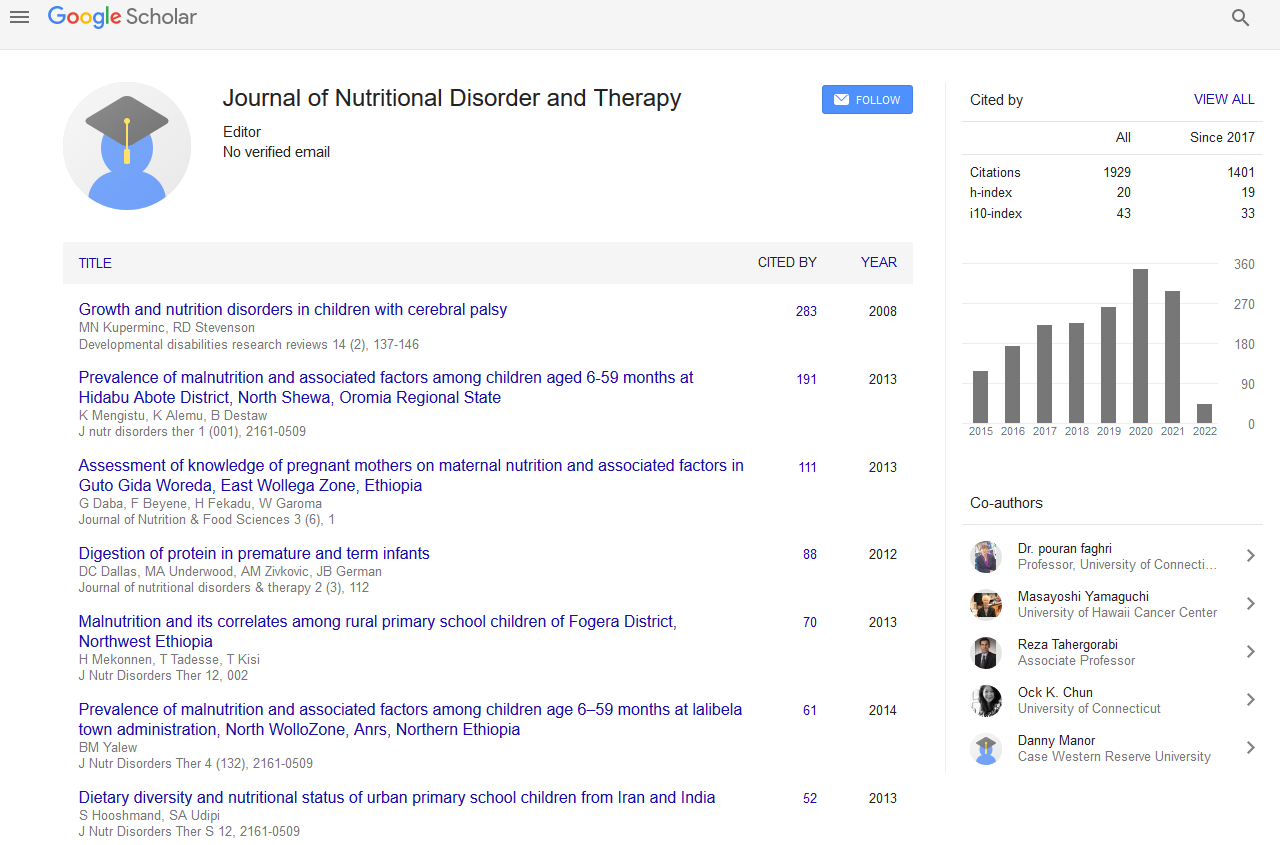Indexed In
- Open J Gate
- Genamics JournalSeek
- Academic Keys
- JournalTOCs
- Ulrich's Periodicals Directory
- RefSeek
- Hamdard University
- EBSCO A-Z
- OCLC- WorldCat
- Publons
- Geneva Foundation for Medical Education and Research
- Euro Pub
Useful Links
Share This Page
Journal Flyer

Open Access Journals
- Agri and Aquaculture
- Biochemistry
- Bioinformatics & Systems Biology
- Business & Management
- Chemistry
- Clinical Sciences
- Engineering
- Food & Nutrition
- General Science
- Genetics & Molecular Biology
- Immunology & Microbiology
- Medical Sciences
- Neuroscience & Psychology
- Nursing & Health Care
- Pharmaceutical Sciences
Maximizing the efficacy of the ketogenic diet nutrition medical treatment for super-refractory status epilepticus
JOINT EVENT: 13th International Congress on Advances in Natural Medicines Nutraceuticals & Neurocognition & 14th International Conference on Clinical Nutrition
July 27-29, 2017 Rome, Italy
Yeou-mei Christiana Liu
University Avenue(Toronto), Canada
Posters & Accepted Abstracts: J Nutr Disorders Ther
Abstract:
Super-refractory status epilepticus (SRSE) is defined as status epilepticus (SE) that continues or recurs despite 24 hours of high dose suppressive therapy. SRSE carries very significant morbidity in the pediatric population. A retrospective chart review was done to identify children with SRSE in our hospital. Charts were reviewed for demographic and patient factors, details of diet administration and outcomes were noted. Eleven children (7 boys, 4 girls), aged 0.5-13.4 years (mean±SD = 8.1±3.5) with SRSE were identified. In all cases, the diet was given via nasogastric tube. Diet ratios and calories were calculated according to patient�??s weight, age, bowel routine and concomitant treatments (steroid treatment and intubation). During the ICU admission, diets were modified up to 4 times per patient to achieve adequate ketosis by raising ratios or restricting calories. Ratios were adjusted up to a 5:1 (92% of daily calorie from fat) for patients with steroid therapy or insufficient ketosis. Post ICU discharge, diet ratios were reduced, once seizure control was achieved. The KD was effective in aborting SRSE in 9 of 11 children. In these 9 children, the diet was started between 0-34 days (mean±SD = 11.6±6.2 days) after ICU admission. They were discharged from the ICU 3-43 days (mean±SD = 15.1±14.1) following admission. In 8 of these 9 children, urinary ketones ranged from 8 to >16 mmol/L. The remaining children had urine ketones ranging from 4-16 mmol L-1. KD failed to control seizures in 2 patients. In these children, KD treatment was initiated at 36 and 46 days after onset of SE. In both cases, urinary ketones fluctuated between 0.5 to >16 mmol L-1 and both were receiving excess carbohydrates (CHO) from medications, which likely contributed to unstable ketosis. Data on longer term KD management was available for six children. In all, diet ratios were gradually decreased as the seizures improved, to KD ratios of 2.75:1 (86% of daily calorie from fat) to 4.25:1 (89% of daily calorie from fat). Calories were also adjusted to maintain growth. We have demonstrated success in utilizing the KD to abort SRSE in children. Multiple diet adjustments of calories and ratios were required to achieve stable ketosis. Difficulty in eliminating excess -CHO from IV fluids, medications and other sources are a barrier to effective KD administration in the ICU. In this series, children who did not respond to the KD initiated the diet later in the clinical course of SRSE. Earlier, initiation of the KD and consistent moderate to high levels of ketosis were more common among those children in whom the SRSE was aborted. Long-term diet and seizure outcomes in this series are currently under review.


